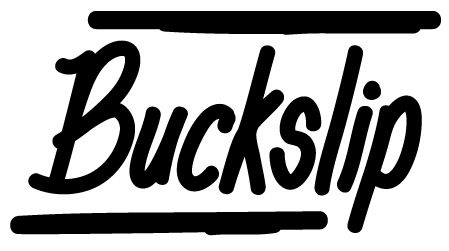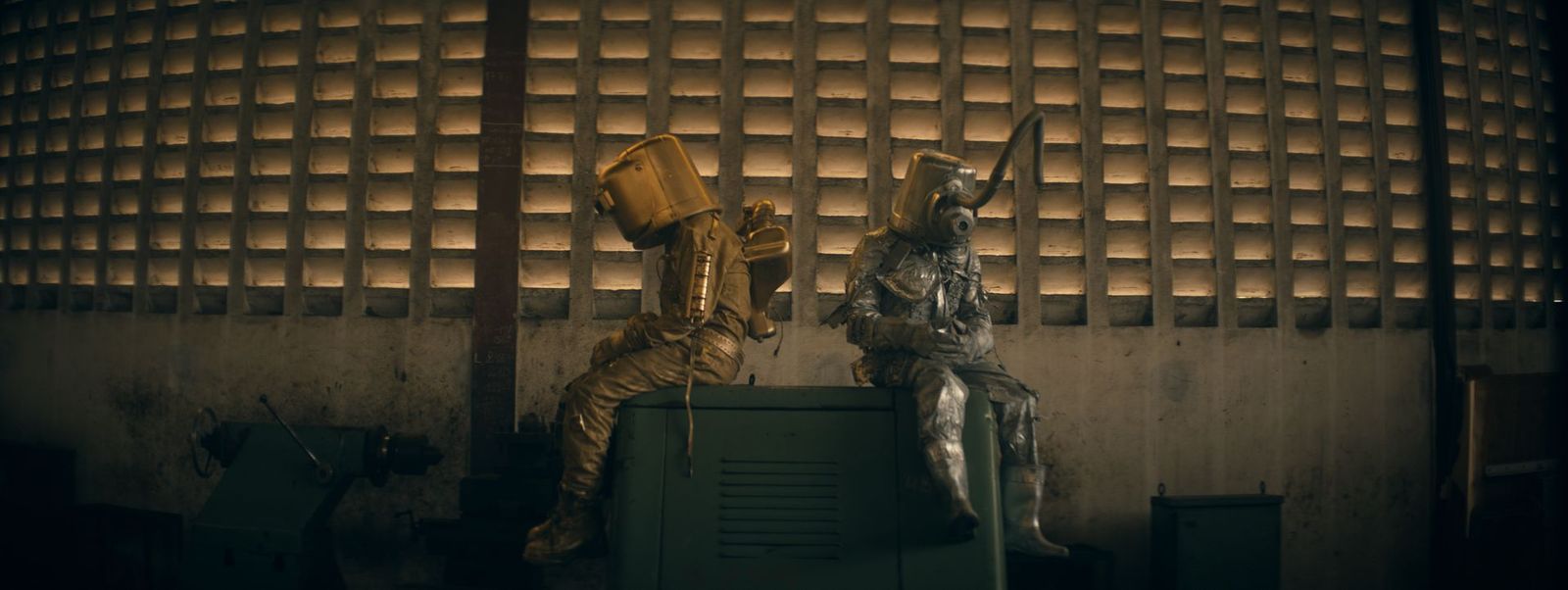We may be living in a moment of radical uncertainty, but that doesn’t mean the people who get paid to think about the future for a living aren’t still doing their thing — issuing Coronavirus-inspired white papers, briefing materials, and subscription newsletters, leavened in large measure with all sorts of conjectures and predictions about what lay around the corner. Foresight consultancies, think tanks, and forecasters all weighing in on what to expect from some variation on “The New Normal”.
In “Pandemic Futures”, a Medium essay she published in early June, as mass protests over the killing of George Floyd continued to roil America’s streets, Devon Powers noted how this “veritable bonanza of futurist content” typically came tinged with “an odd mixture of opportunism and mea culpa.” On the one hand, none of the forecasting agencies anticipated the pandemic, despite the warnings of scientists and epidemiologists that we were overdue for one — a blindspot that Powers, author of the wide-ranging 2019 book On Trend: The Business of Forecasting the Future, rightly chalks up to the profession’s tendency “to shy away from doomsday scenarios in favour of optimism and technological solutionism.” But that hadn’t stopped the futurists and forecasters from following up any gestures of humility with a renewed pitch to clients. Basically, how the disruptions wrought by the pandemic, this sudden churn of uncertainty, only showed how the need for their services was greater than ever.
Spend enough time in the futurist mines, as I have in the past year for research, and you encounter all sorts. From old-school scenario planners, hardcore techno-utopians, and culturally omnivorous “cool hunters” to speculative designers, innovation theorists, and anthropology PhDs. The problem, however, is that the business of foresight, or what is sometimes called “future studies”, doesn’t actually include all sorts. As Powers learned over her four years of critical observation within the industry, its practitioners and leading voices are overwhelmingly white.
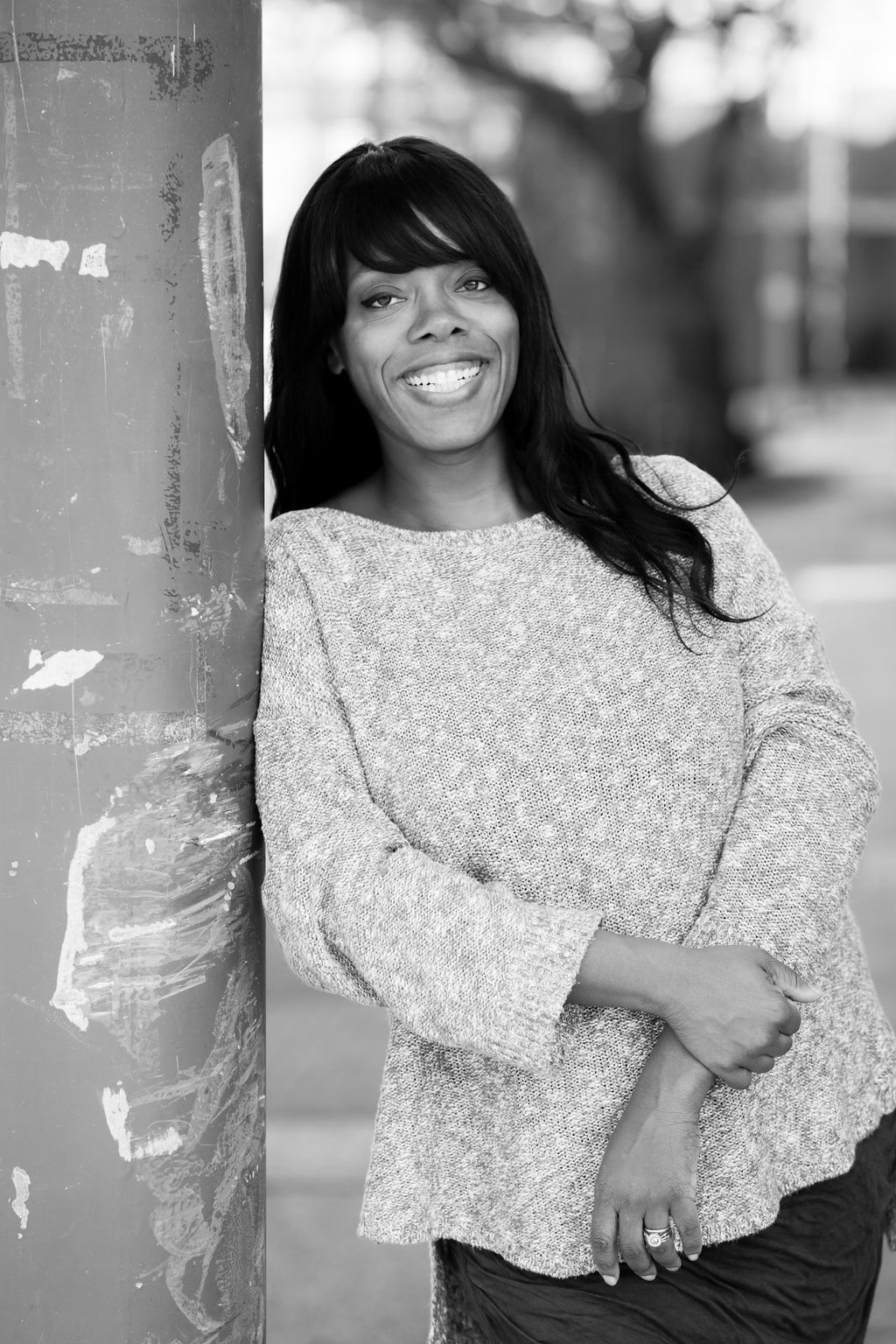
Which goes some way to explaining the peculiar and delusional colour blindness that afflicts the shiny, seamless futures these companies so often invoke, as if race and inequality will soon no longer be a factor in the human equation. “So many futurist visions are tied to colour blindness and the erasure of race,” Powers explained to me when I spoke with her over Zoom in mid-June. “But they’re tied to the erasure of race in a way that serves white privilege, not in a way that serves the interests of people of colour.”
So, who gets to do all this futuring, and who is it for? Who pays for it? And whose particular hopes, needs, and priorities for the future are left out?
This interview has been edited for clarity and length.
Chris: It feels like an intensely personal question to ask these days, but how are you doing? If a stranger can ask…
Devon: It’s up and down. It’s a very strange time to be alive but everyone is going through it so that sort of gives you a sense of camaraderie with the human race, as cheesy as that sounds. In Philadelphia we have just moved to what’s called the “Yellow Phase”, so we can meet in groups. Now it feels like you’re waiting for someone to ask you to the prom. Who’s going to pick me to be in their social group? Who trusts me enough to risk their health to see me?
I was having that same conversation with Patrick, my work partner. While the rest of the province has moved on to the first stage of reopening, Toronto has not, as most of the remaining cases in Ontario are still here. But at least we can look ahead to protocols relaxing soon. Then there’s that sense, “Will this friend invite me into their group?” Triggering these social anxieties over, how close am I really to this person, or how important.
There’s also the tension you see in couples. I have a friend who’s much more social than his partner, and he’s kind of ready to get out there. “Let’s go to the park, have a bottle of wine. Let’s go for a bike ride.” Meanwhile she’s much more cautious. That’s causing tension in their relationship because they don’t want to socialize on the same level.
About your “Pandemic Futures” essay — in it you note how just about all of the foresight and futurist-type consultancies failed to anticipate the pandemic. And yet, despite this, they have if anything been emboldened by it, sending out what you describe as “a veritable bonanza of futurist content” as they all strive to tell us or their clients what to expect next. And it’s not just foresight types, it’s journalists, academics, any sort of specialist you could imagine. This is how X will be, this is what will happen to Y. At this moment of radical uncertainty, we’ve never seen so many predictions. What do you make of it?
For these forecasting companies the future is a very promotional kind of rhetoric, by which I mean the future gets clicks. When you make these broad superlative claims that are hyperbolic, whether it resonates with people or it makes them angry, it gets attention. People are feeling so destabilized about things, they want to be able to plan in order to feel like their lives have meaning and direction and value. It’s just a very natural tendency.
With this much uncertainty, people are grasping for anything that’s going to give them an answer to these existential questions. For example, what is the future of dating? I would love to know. But the world was already constantly changing [before the pandemic]. So, when somebody talks about the future of X or Y, what are they actually even talking about? Are they talking about what to expect in 2021? Because 2021 isn’t going to be the same as 2025. Yeah, a lot of things are going to keep changing very rapidly but many of those things will go back to the way that they were for better or worse.
Perhaps tellingly, a lot of what these foresight-types are predicting is really an acceleration of more of the same — more technology, for example. You might not quite use this phrasing exactly, but more or less, you identify how so much of the foresight business works as the handmaiden to globalization, facilitating the spread of what are essentially neoliberal ideas and policies. This aspect of, “Well this is how things are going so we better just go along with it.”
In May I watched this event put on by a Mexican forecasting and design agency about global trends post-COVID 19. One of the participants was talking about the future of retail. He was talking about what the consumer is going to want when they get back into the retail space. What are people really going to want when they start shopping again?
The answer was that the future of retail would be all about data. People are going to be open to giving up their data to be surveilled in order to protect their health, that way the brand can give them more customized experiences — maybe they spend less time in the store or come less directly into contact with things.
When I heard that I thought this is bullshit. What is that based on? Maybe that’s based on the research you were doing in 2018 or 2019 that gave you those signals. And we all know that if we dig down into some of those surveys and research they can have serious failings.
Even if we just bracket that, and take it for granted, to whatever degree that’s sound, you still have a pandemic. You have a pandemic that has broken a lot of things and forced us to press pause and see that a lot of the practices we were engaged in were unhealthy and deeply troubling. So, to say that the consumer will want to return necessarily to being surveilled is just an incredible assumption. At the very least it’s an incredible assumption. It could be something more deeply troubling than that.
Like, that observation might only apply to a very narrow subset of society who are privileged enough to feel comfortable with the idea of being surveilled or traced in that way.
It just ignores that which does not fit that narrative. There have been studies done by places like the Pew Center for Research at the University of Pennsylvania that show many consumers simply feel like they are powerless to not give up their data. It’s not that they want to, they feel like they don’t have an option. Even if you just take that as information — that some consumers are worried about their privacy — that should moderate your prediction. But no, they choose to ignore that. I talk about it in the book a little, that much of this work is really about creating stories and sensible narratives through what is a vast expanse of information.

Which brings us to who is doing all this “future work”? As you point out in the book and the essay, the companies doing this work are overwhelmingly white. If there were ever a moment when it should be clear how different the future looks to different people this would seem to be it.
Yeah, the obvious questions to ask are, what kind of people do you have in the room, what kind of perspectives are you getting? Now, in a lot of the foresight business you have many people who are democrat, left, liberal people, cosmopolitans. They are interested in cultures besides their own and they see themselves as omnivorous. They’re not the people who are just avoiding anything that doesn’t resemble themselves. In fact, they’re more interested in difference. In that sense, there is a sort of interest in diversity and multiculturalism and all the rest. But you have to ask yourself, what does that do, and what purpose does it serve. I found that sometimes it serves as just window dressing or cosmetics.
It’s like the United Colors of Benetton ad. You can have a beautiful multi-ethnic photograph that has a lot of different kinds of people in it. But that is not the same thing as thinking systematically about what it would mean to make life different or better for all of those different kinds of people.
Then the other side of who is doing this foresight work is who it is for, who is paying for it?
These [forecasting] companies largely work with Fortune 500 corporations, these high-yield clients. And the clients will often come in looking to hit particular demographics, maybe those aspirational, cosmopolitan demographics, but that doesn’t mean that they’re looking at people of colour… So, if that’s your market, and that’s what your clients are asking you to do, then that’s the direction you sail in and it cuts a lot of other things out in the way that you look at the future generally. More than anything, what it cuts out is struggle. It cuts out the struggling person who may not have the money to buy those products. It cuts out all of the things that that person might be dealing with. Whether we’re talking about racism or poverty or other sorts of inequalities. It just cuts all of that stuff out.
Not only do you not see what the future might entail for a whole swath of people, but you don’t see the ways in which the futures you’re enacting are actually also determining the lives for those people and maybe doing so in a really bad way.
They’re inherently exclusionary, just by their frame of reference.
Absolutely. I teach trends and futures in one of my classes. And I always say to my students, “Futures for whom? Who are you imagining this future for?” I really hope that people ask themselves that question when they’re doing this work. Whether they’re doing it professionally, they’re doing it in a community organization, or in the foresight business. Who is your future for? And if your answer is that your future is for everyone, well, then it’s probably not. That’s the clearest indication that it’s not. A lot of people just don’t want to have that conversation because the conversation is difficult, and it is ongoing.
In that Medium essay, you also write, “Disruption may alter how and whether we fulfill certain needs, but it doesn’t change relations of power”. While online activism may provide tools for redressing imbalances, disruption often serves only to further consolidate power. Disruption seems to portend there’s enormous change in our daily living, but in fact all the underlying structures are more or less intact?
What disruption really means in this sense, is that businesses want to remake how other businesses work. And they want to do so merely in terms of either changing the players, taking out these intermediating companies, and going direct to consumers, or we take a business that was not digital and we make it digital in some way. That requires other forms of transformation and other kinds of players to do that work.
Does that have an impact on how all of us live? Absolutely. Is that potentially disruptive? Absolutely. But I think that even when we use disruption to talk about what it means to our lives, it’s not actually what businesspeople mean when they say disruption.
They’re not thinking about social disruption, they’re thinking about business disruption. They’re thinking about the fact that businesses need to move in this particular direction towards AI, towards virtual reality, towards digitalization, and that they need to fundamentally restructure their business. It’s very obvious, but this is just about capitalism, it’s about making money. And disruption is not about unraveling that process, it is about changing that process in a way that’s fast and that privileges certain kinds of players and actually has absolutely nothing to do with how the rest of us live — that’s an externality to business disruption.
That’s what I mean when I say, it doesn’t change the relationships of power. And some people think that it does because now we have Facebook and 20 years ago it was Blockbuster or AT&T or whatever twentieth century company. But tell me that Jeff Bezos and Mark Zuckerberg are not the Rockefellers of their day. They are the Rockefellers. They are the Carnegies. They are the business magnates who have an incredible amount of power that started in one industry and became everything else. Political, social, cultural clout, what have you. It’s exactly the same.
This word disruption has just become so tired, despite the fact that we are now actually going through a dramatic social and cultural disruption.
Yeah, this is what disruption actually looks like…
This is what disruption actually looks like. It looks like 40 percent unemployment. It looks like a global pandemic. It looks like race relations that have been troubling and oppressive for centuries now exploding. Think of the increasing predominance of single-person households today. How many people are experiencing this pandemic, especially in industrialized countries, alone? Or think about environmental calamities, think about water shortages. All of those things are truly disruptive. I wish we still had that word to use to describe those things because that’s what it really is.
In the early days of the pandemic, it was somewhat amusing to watch how companies responded through their advertising. In your book you talk about how forecasters position themselves as the answer to the problems presented by the future. They commodify the future. And sometimes it seems that’s the same strategy advice they’re giving their clients — be the solution to the problem of the future. The first pandemic ad that struck me was this TV spot from Cadillac, just days into the lockdowns. It didn’t miss a beat. The message went, “In these times of uncertainty, we’re here for you.” What does that even mean? I don’t have a Cadillac, I don’t want a Cadillac, but thanks, Cadillac.
You get a knock on the door and they’re like, “Hi, it’s Cadillac, just checking in. How are you all doing?” Everybody wants to feel like they have the answer. One of the things I’ve been so fascinated by with this book project, and particularly in studying people who do consulting, is that their clients often want somebody to just affirm them. Somebody to say, this is okay, what you’re doing is right, or maybe it’s a little nudge in a slightly different direction.
A lot of it is what I refer to as the “Somebody Knows” principle. Amid all these questions, you just want somebody to come in and say that they know, whether they’re right or wrong, it doesn’t matter. That is what a lot of this is.
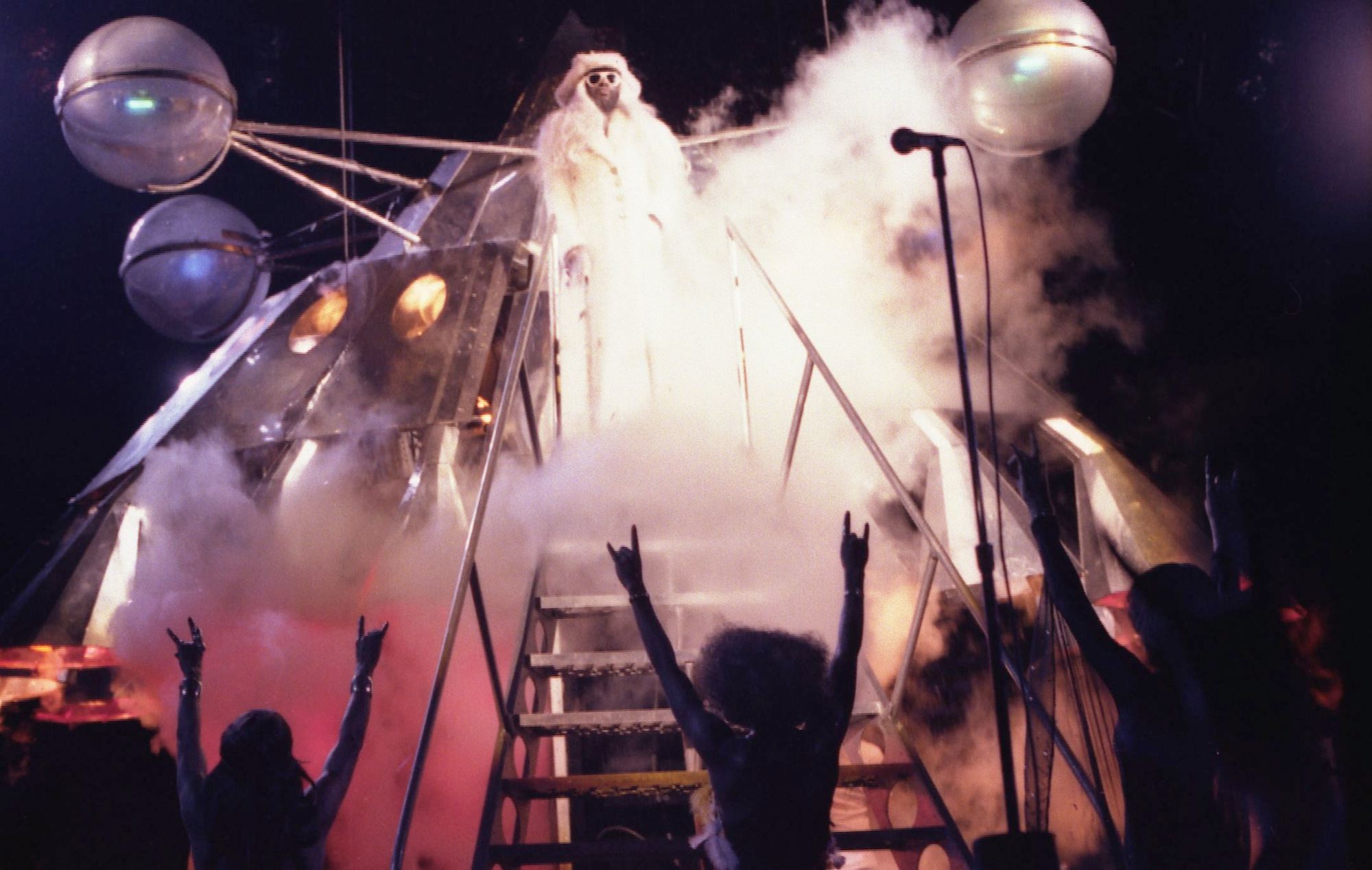
In the book you call that “performative futurity”, how the industry needs to be seen as possessing some special knowledge about what lay ahead.
I sat in on this meeting with the consultancy Sparks & Honey and representatives of a very mainstream consumer food brand were there. The Sparks & Honey people were just doing their thing. At the time it was all about how cannabis was coming and envisioning all these brunch places where you could go and smoke up. Their whole thing was throwing this really edgy, cool, you’ve never heard of this, oh my gosh! shit at these representatives from the food brand. Who are like deer caught in headlights. Those people are never going to go to that brunch place where you can smoke up while you’re eating pancakes with your friends.
This is in part what I mean by performative futurity. It’s this idea of just affirming to people that you know about things that they don’t know about. And the sheer fact that you’ve affirmed for them a corpus of things that they’ve never heard of is so awesome that they believe you. It inspires confidence. Even if it’s just bells and whistles. I do think that a company like Sparks & Honey probably does have their finger on the pulse of a lot of things, because that’s what they do all day, read stuff, watch social media, et cetera. But that may have very little to do with your average brand.
There’s another aspect of performativity, which is to actually help set in motion the future you are pretending to describe. In 2016, I went to one of the summits that the Future Hunters organize in New York City. There were clients like General Electric, Hasbro, the government of the Dominican Republic, and the U.S. Department of Transportation. As this was 2016, we have to roll back the clock some on driverless cars, as it feels like adoption of that technology has stalled.
You could just see the guy from the Department of Transportation being, like, “Uh oh, we’re so not ready for this.” You could watch the wheels turning in his head, trying to figure out “how are we going to get ready for this?” If you’ve read anything about driverless cars, there is a huge distance between the kinds of limited experiments we’ve seen so far and a city full of people with them. We are a very, very long way from that. But there was this sense of trying to actively set that in motion. So, you predict it’s coming and that makes people feel anxious about the fact they’re not ready for it.
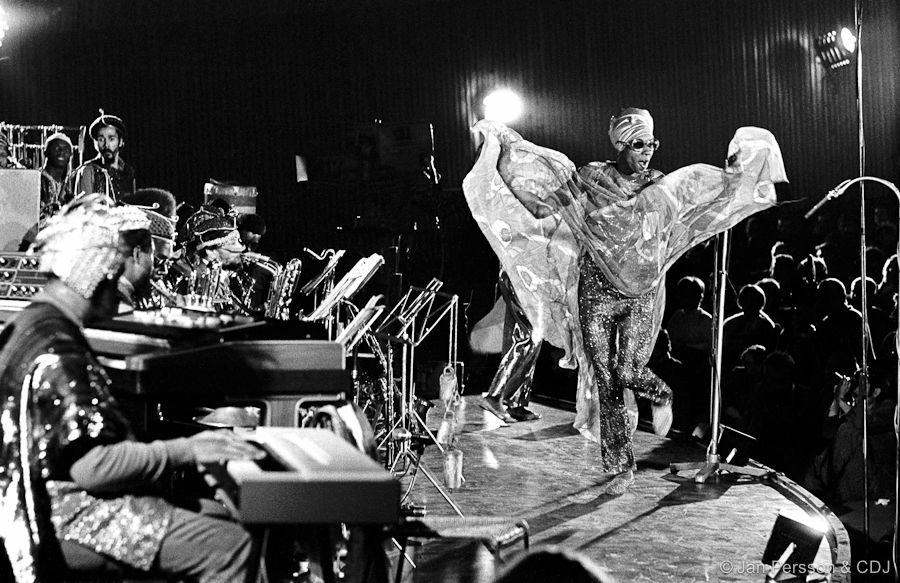
In the chapter “Futures Without Events” you take a dive into the work of Afrofuturism, understanding its potential as a progressive, alternative mindset for thinking about and engaging with futurity, and peoples’ relationship with technology. What seems particularly constructive about Afrofuturism, is that it is a form of futurism that is preoccupied with continuity — past, present, and future — and the necessity of reckoning with the past in order to build a future. Whereas the conventional futurisms we are so often sold are predicated on this disruptive or radical break with the past.
Afrofuturism is one of many different kinds of futurisms that doesn’t see the world in a linear sense, but sees the present as embodying the past as well, and sees it as necessary to sort of think about and reconcile with the past in order to make a future where Black people exist. So many futurist visions are tied to colour blindness and the erasure of race. But they’re tied to the erasure of race in a way that serves white privilege, not in a way that serves the interests of people of colour. You know those pictures of the future where everybody’s moving about fast, everything is shiny, and the people are mostly white...
There’s that whiff of multiculturalism…
Exactly. No, if you are talking about a future for Black people, you’re talking about a future that has reparations. You’re talking about a future that has somehow atoned for racial injustice or the seizure of indigenous land. What would that future look like? You have a lot of folks, particularly in Silicon Valley and its adjuncts around the world, who think that history does not matter. We have arrived at a moment, they believe, where it’s so much more important to push forward than it is to look backward. And that is how you end up with fascism, or this sort of techno-fascism.
Once you realize that, you’re like, “Oh right, that’s what they think is happening.” Any sort of opposition to their vision is just an externality in the same way that environmental pollution was an externality to Rockefeller or Carnegie. That’s a little ahistorical because the concept of environmentalism came a little bit later, but you know what I mean. It’s like colonialism is an externality from the rise of British or French power. It just sort of happens.
I might be mistaken, but my impression is that most of the work in Afrofuturism happens in the worlds of speculative design, visual art, and music, and not in the more institutional formats we have been talking about, like within a foresight consultancy or think tanks. Is that accurate? Is it possible to see something more institutional take shape?
I don’t want to say that it’s only an aesthetic movement because it’s an intellectual and academic movement as well. There are people who identify as Afrofuturists across a lot of different fields. That said, to whatever degree it is an alternative movement, by which I mean counter-hegemonic, it’s a little hard to say that what needs to happen is that it needs to corporatize.
And maybe it has corporatized on some level. Obviously, movies like Black Panther have introduced a lot of people to Afrofuturism. There are lots of Afrofuturist fashion designers and artists who are bringing something to the conversation. And because of the way that those creative fields work these days, oftentimes they do have some sort of corporate buy-in or patronage or what have you.
I tend to be of the mind that if the goal is to improve social conditions for people who are disenfranchised, then you shouldn’t leave any tool off the table. And if that means organizations can use Afrofuturist ideas as a way to expand their thinking, then they should. I know some people would probably think of that as cooption or appropriation, but as much as I am personally critical of liberalism, I also don’t see some of these big power players going away any time soon. If that’s the truth, then we have to try to reform them from the inside on some level.
Maybe the activists in the streets are the futurists we need to be listening to now?
Obviously, the way these disciplines and companies practice futurism and foresight is not the only way to imagine the future. They don’t have a license on that, they don’t own it. Future talk is something that all of us do, future imagining is something that all of us do. We just don’t all use futurist methods to do so.
Some of those methods can be powerful and need to be in the hands of people who want to make real change. The most basic aspect to any of those methods, which a lot of people just do naturally, is you have to envision something being possible before you try for it. If you don’t think that it’s possible, for instance, to defund the police, if you can’t imagine what that might look like, then you’re not going to even think about that. A lot of people in the US have been alarmed by that rhetoric at first, but it quickly starts to make sense. And they’re asking things like, “Why does my police department have tanks?”
It's such a basic thing — imagining a world that can be different and then having a way of working toward that goal.
Devon Powers is an associate professor in the department of advertising at Temple University in Philadelphia. On Trend: The Business of Forecasting the Future was published by the University of Illinois Press last fall. Her previous books include Writing the Record: The Village Voice and the Birth of Rock Criticism (2013), and Blowing Up the Brand: Critical Perspectives on Promotional Culture (2010), which she edited with Melissa Aronczyk.
